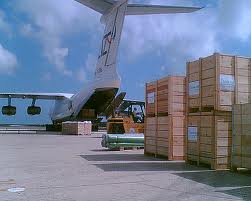Cargo figures released by the Kenya Airport Authority (KAA) last year were incorrect due to inadequate regulation of freight passing through Jomo Kenyatta International Airport(JKIA).
Flaws in the monitoring procedures at the airport, highlighted by cargo handlers and admitted by Cargo Commercial Manager William Simbah, led to the release of distorted figures in July which suggested that Kenya’s cargo industry had been faltering since 2008 when it has, in fact, been on the rise. With the authority failing to properly monitor the amount of cargo handled and certain cargo flights not subject to monitoring at all, concerns arise that any potential graft at the airport is being missed. The figures also paint an unflattering image of Kenya’s vital export industry to foreign investors at a time of great economic importance. KAA’s figures suggest that total freight handled at the airport fell from 300,736 tonnes in 2008 to 263,070 tonnes in 2009 and a five-year low of 229,747 tonnes in 2010. Mr Simbah, however, has confirmed that, while KAA is duty-bound to release the information, these statistics are wrong. He agrees with cargo handlers at the airport and Business Monitor that the industry has actually been seeing growth for the past few years. “It hasn’t gone down. The figures are wrong,” he said. “It is a problem with the data collection that we are working on.” Business Monitor estimates that cargo tonnages handled at JKIA have been rising at double-digit percentage rates for most of the past few years. Growth fell to 1.5 percent as a result of the global recession in 2009 but recovered to a stronger 9.3 percent last year. This picture is confirmed by Jeroen de Clercq, CEO of Swissport, who says his company has been seeing double-digit growth each year and calculates that across the board growth has been just under ten percent per year. Even those who make more conservative estimates agree that cargo is not declining. It has become the norm for individual cargo handling companies to work from their own statistics rather than use the unreliable KAA figures, with sources privately admitting that the KAA does not have a grip on the amounts of cargo passing through the airport. JKIA carries importance as a gateway to East and Central Africa and is also the major hub for exporting Kenyan flowers and horticulture products. Growth is dependent on increased production from these sectors, which account for more than ninety percent of Kenyan air exports. The Kenya National Bureau of Statistics confirm that exports in general have risen steadily in recent years, bar a small decline in 2009 which was rectified by a high of $5,172.94 in 2010. Statistics obtained from the Kenya Flower Council show flower exports have been climbing steadily year-on-year, from 70,666 tonnes in 2004 to a high of 120,221 tonnes last year. None of these figures suggest an industry that is in decline, though KAA figures had the amount of flowers passing through the airport falling from 6,414 tonnes in January 2010 to 6,348 tonnes in December of the same year, presenting a false picture of the state of this important industry.De Clercq highlights the negative connotations of incorrect statistics. “The figures portray a poor image,” he says. “They are bound to release them, they can’t cook the numbers. But they are wrong”. With exports accounting for 14.2 per cent of Kenyan GDP, it is essential that Kenya continues to show evidence of growth within the sector to encourage continued investment and greater confidence in the industry. The incorrect statistics do not encourage this, and also raise fears that the KAA has insufficient control over the airport to prevent any potential graft within the industry.
Timothy Nyaoga, marketing officer for the KAA, says individual transit sheds compile statistics for the authority, which also has its own personnel on the ground. Freight companies compile their own statistics and provide them to KAA officials, with charters and scheduled airlines not required to declare their tonnages. Discrepancies have arisen between information on the Master Airway Bill (MAB), the document issued by the airline, and the House Airway Bill (HAB), a contract issued by the carrier to the customer. One MAB may contain numerous HABs, yet it is apparent that there has been some confusion, with the KAA considering only HABs while some shippers have been submitting MABs. Nyaoga also points to access problems as being responsible for the incorrect figures, with some cargo going unmonitored. “Shippers might be accessing the Airside through designated areas without proper declaration of the correct weight,” he said. “This originated due to incapacity in handling Fresh Produce which has been sorted out now.” Nyaoga says the access gate in question is to be closed, with all cargo going through the transit sheds. Mr Simbah has also issued assurances that the KAA is taking steps to ensure it has a more complete picture of the situation at JKIA, a move that goes hand-in-hand with increased investment at the airport since 2007. The authority has been criticised for not investing properly in the airport over recent years, necessitating individual companies to regulate themselves and invest in their own infrastructure. With the authority committed to investing $200 million in the airport in order to increase its capability to handle larger amounts of cargo, there is also a need to shore up regulation and ensure a clear picture is presented of this important industry and the KAA’s capability to prevent graft. As de Clercq notes, the KAA has finally realised that “a genie was coming out of the bottle and needed pushing back in.” Source: http://www.ventures-africa.com







